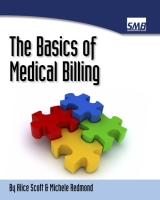Now we’ve covered copays and deductibles, that leaves coinsurance. Coinsurance is a term used by the insurance carriers to refer to the amount that the patient is required to pay for a medical claim.
If a patient has an indemnity insurance plan then they would not have a set copay or a set amount that they are responsible for. The amount the patient will owe will be determined when the claim is processed.
For example, if the patient has an 80/20 indemnity plan, then the insurance carrier will pay 80% of the allowed amount and the patient is responsible for the remaining 20%. So if a provider bills $120 for an office visit and the insurance company allows $100, then the insurance would pay the provider $80 and the patient would owe $20.
The problem this presents for the provider is that the patient cannot be charged for their portion at the time of the visit. Since the amount the patient owes cannot be known until the claim is paid, the provider must wait until the insurance carrier processes the claim before they can bill the patient.
Many times with indemnity plans the patient also has a deductible that must be met first. After the deductible is met then the insurance carrier will begin to make their payments. Again, even when you know the patient has a deductible you can’t charge them up front. You must wait to find out what the insurance carrier is going to allow for your services. You can only charge the patient the allowed amount, not the billed amount.
Coinsurances can vary depending on the plan. They are not a set amount like 80/20. They can be 70/30, 90/10, etc. You should call when the patient comes in initially to find out what type of insurance plan they have. Just advise the patient that they will be billed for their responsibility as soon as their insurance carrier makes payment.
This is a good example of why it’s important to make sure your claims are being submitted and processed timely. If you are billing a patient for their portion 2 weeks after their visit instead of 6 months, you are more likely to get paid.



